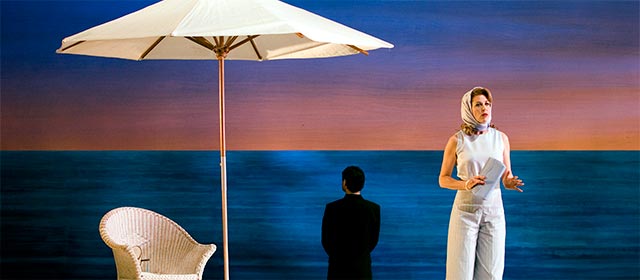He korero whakarapopoto
Theatre design includes designing the set, lighting, costumes, sound and other audiovisual elements for plays, ballets and operas.
Set design
Traditionally, plays, ballets and operas were performed in theatres where the stage was at the front with a frame around it. Usually a painted backdrop would hang at the back of the stage.
From the 1960s there was more local professional theatre. It was often performed in spaces such as converted halls, cafes and even outside – not in professional theatres. The performance area was less defined – the audience might be seated on either side of the performers. More simple sets were generally used.
New Zealand’s first professional stage designer was Raymond Boyce, who arrived from England in 1953. He designed sets and costumes for performances from major opera and ballet to minimalist theatre.
Other important stage designers have included Grant Tilly, Tony Rabbit, Dorita Hannah and Tracy Grant Lord.
Costume design
Costume design is especially important for large-scale productions such as opera and ballet, where costumes show character. Many theatre costume designers also work in film and television.
Lighting design
As stage sets became more minimal, lighting became more important. Lighting defines the performance area and creates atmosphere. In the 1980s Jeremy Collins was one of the first specialist lighting designers, and he also developed Selecon, a company that makes lights for theatre, film and television.
Image projection
Towards the end of the 20th century it became more common to use image projection in theatre. At first projections were simply used as backdrops, but, as technology became more advanced, performers could interact with the projected imagery.
Sound design
Sound design also benefited from advances in technology, and by the 2000s soundscapes were commonly used in productions.
Theatre design training
There was no formal training in New Zealand for theatre designers until 2003, when a degree in performance design was first offered.





